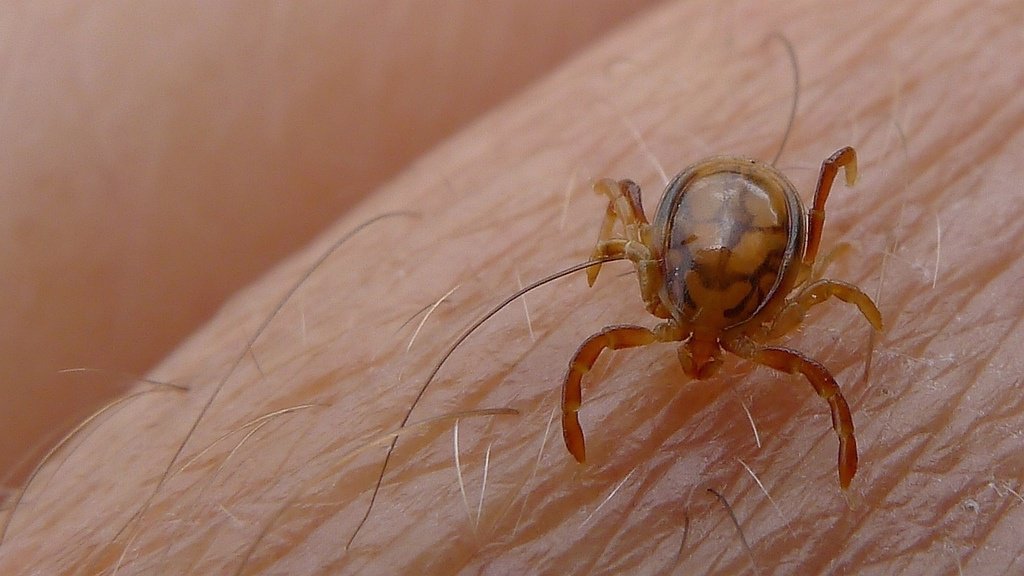Madrid, May 14. (Europe Press) –
Researchers have identified a missing piece in the puzzle of Lyme disease, an infection transmitted by the bite of a tick infected with Borrelia burgdorferi, thus taking a further step in understanding how it causes inflammation and disease, as published in the journal PLOS Pathogens.
Lyme disease is a vector-borne disease and its incidence has increased over the past twenty years in countries such as the United States, where there has been a significant increase in both the number of reported cases and the geographical distribution of the disease.
Virginia Tech, University of Virginia assistant professor Brandon Guterres and his laboratory have continued to treat the Lyme disease epidemic over the past year, and recently identified another missing piece in the Lyme disease puzzle.
“This discovery broadens our understanding of how ‘Borrelia burgdorferi’ causes inflammation and disease,” explains Mary Davis, lead author of the paper, a former Jutras laboratory graduate in the Department of Biochemistry in the School of Agriculture and Life Sciences – a testament to how distinct these bacteria are, and to the need for Continue to work to better understand what is going on behind the scenes in order to develop future diagnoses and treatments. “
Almost all bacteria, including the one that causes Lyme disease, make a mesh cyst to protect their cells from the inside. This bag is known as a peptidoglycan. In 2019, Jutras identified a peptidoglycan, a permanent component of Borrelia burgdorferi bacteria’s cell wall, as the possible cause of inflammation and Lyme arthritis, the most common late-stage symptom of Lyme disease.
Previous research by Jutras showed that Borrelia burgdorferi peptidoglycan persists in the body of Lyme arthritis patients after the bacteria enter the body. Weeks to months after the initial infection, the peptidoglycan remains, causing inflammation and pain.
In this new breakthrough, the laboratory discovered a peptidoglycan-related protein from Borrelia burgdorferi that plays an amplifying role in inflammation in Lyme infection patients by acting as a molecular beacon that antagonizes the patients’ immune system.
Using an unbiased protein approach and the Fralin Central Life Sciences Service Mass Spectrometry Research Incubator (VT-MSI), the team identified the protein as NapA. NapA, which stands for Neutrophil Attraction Protein A, is a wonderful immune modifying molecule capable of recruiting immune cells, called neutrophils, into inflammatory peptidoglycan.
“We are delighted with the discovery and dissemination of NapA by Dr. Jutras, as well as its implications for the diagnosis and treatment of Lyme disease. His research fits perfectly with our institute’s vision to impact society by adopting a problem-focused approach addressing global challenges related to the environment and life sciences,” says Matt Holver, Executive Director of the Fralin Institute of Life Sciences.
“NapA is another piece of an ever-evolving puzzle; it appears to play a fundamental role in the daily life of bacteria by contributing to the overall protective properties of peptidoglycans, but it becomes a twisted protein that is able to trick our immune system.” Gutra, Associate Professor of the Fralin Institute of Life Sciences and the Center for Emerging Pathogens of Zoonotic and Arthropods.
“We think the twisted side of NapA has two ways: in the early stages of infection, when bacteria die and release NapA and the peptidoglycan, they act as a decoy to attract immune cells, allowing live bacteria to escape and cause an occurrence.” It can attract immune cells to peptidoglycan, which is a molecule capable of causing inflammation and arthritis. “
To determine how NapA attracted neutrophils, Davis sought out Caroline Jones, who was an assistant professor in the Department of Biological Sciences at Virginia Tech at the time of the discovery. His laboratory specializes in the study of the chemical affinity of neutrophils. Jones placed the neutrophils in the center of a microfluidic slide, which acts as a maze through which cells can wander. On one side of the chip there was a pure peptidoglycan and on the other side a peptidoglycan with Napa.
Jones and Gutra’s labs showed that neutrophils rapidly migrate alongside Napa, indicating that the protein is able to emit chemical signals that attract neutrophils in its direction, the peptidoglycan.
With this new piece of puzzle in hand, Jutras plans to join the lab’s current efforts to improve diagnostic testing and treatment for Lyme disease.
“From a prevention and prognosis standpoint, it is possible that the combination of peptidoglycan and NapA could be a new target for diagnosis,” Jutras says. In theory, it could also be a potential pathway for vaccine development. A measure of probabilities that we are actively studying. One thing we know for sure is that this finding enhances our understanding of how peptidoglycan affects the onset of symptoms in Lyme infection patients. “

“Social media evangelist. Student. Reader. Troublemaker. Typical introvert.”




:quality(85)/cloudfront-us-east-1.images.arcpublishing.com/infobae/SXDWOIO7O5FMZOWUATFEXQYWTY.jpg)


More Stories
National Academy of Medicine and PAHO present reports of the Colombia General Physician Competency Forum – PAHO/WHO
Academic excellence in medical sciences is recognized at Granma.
Medical simulation has revolutionized the training of doctors in the country.